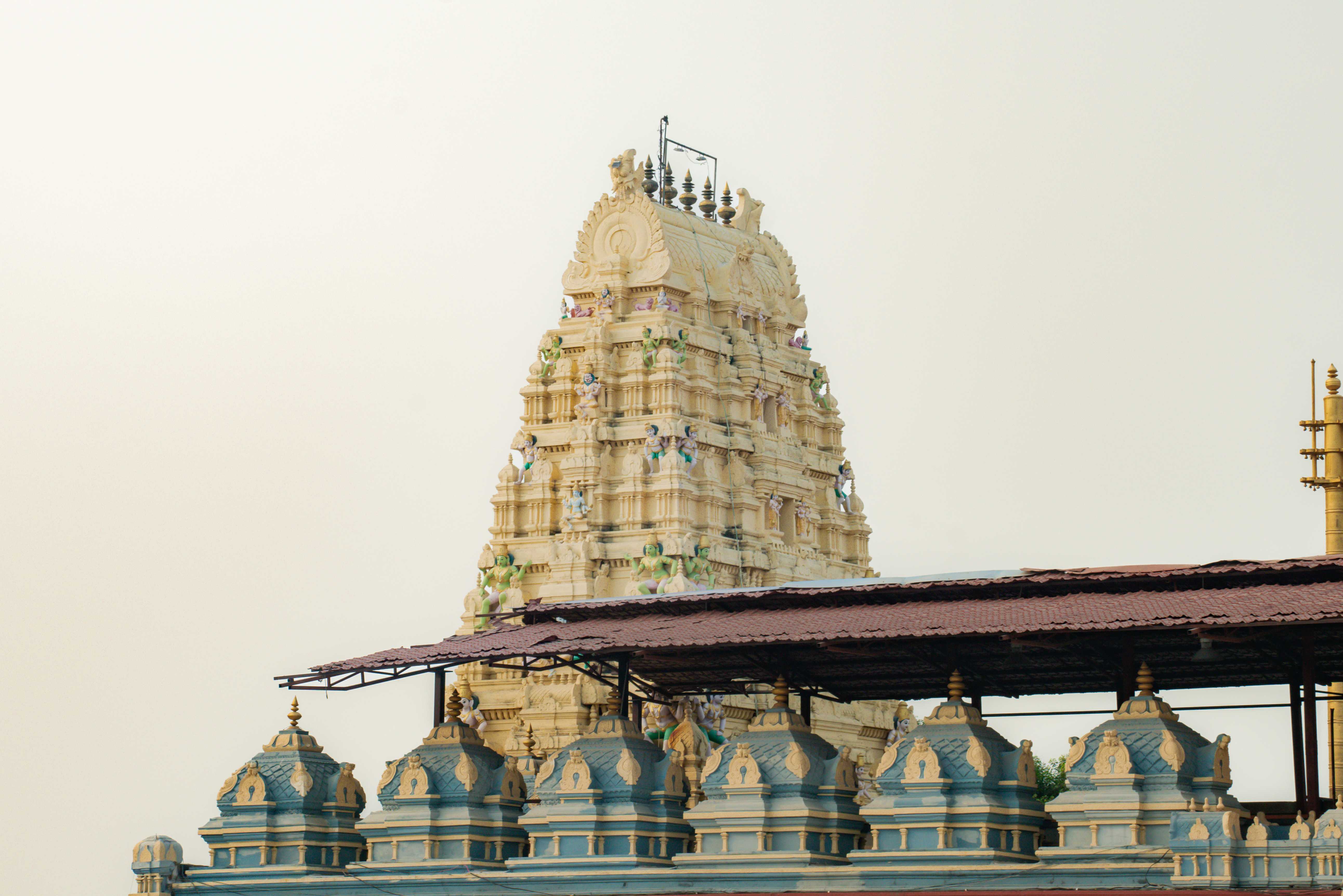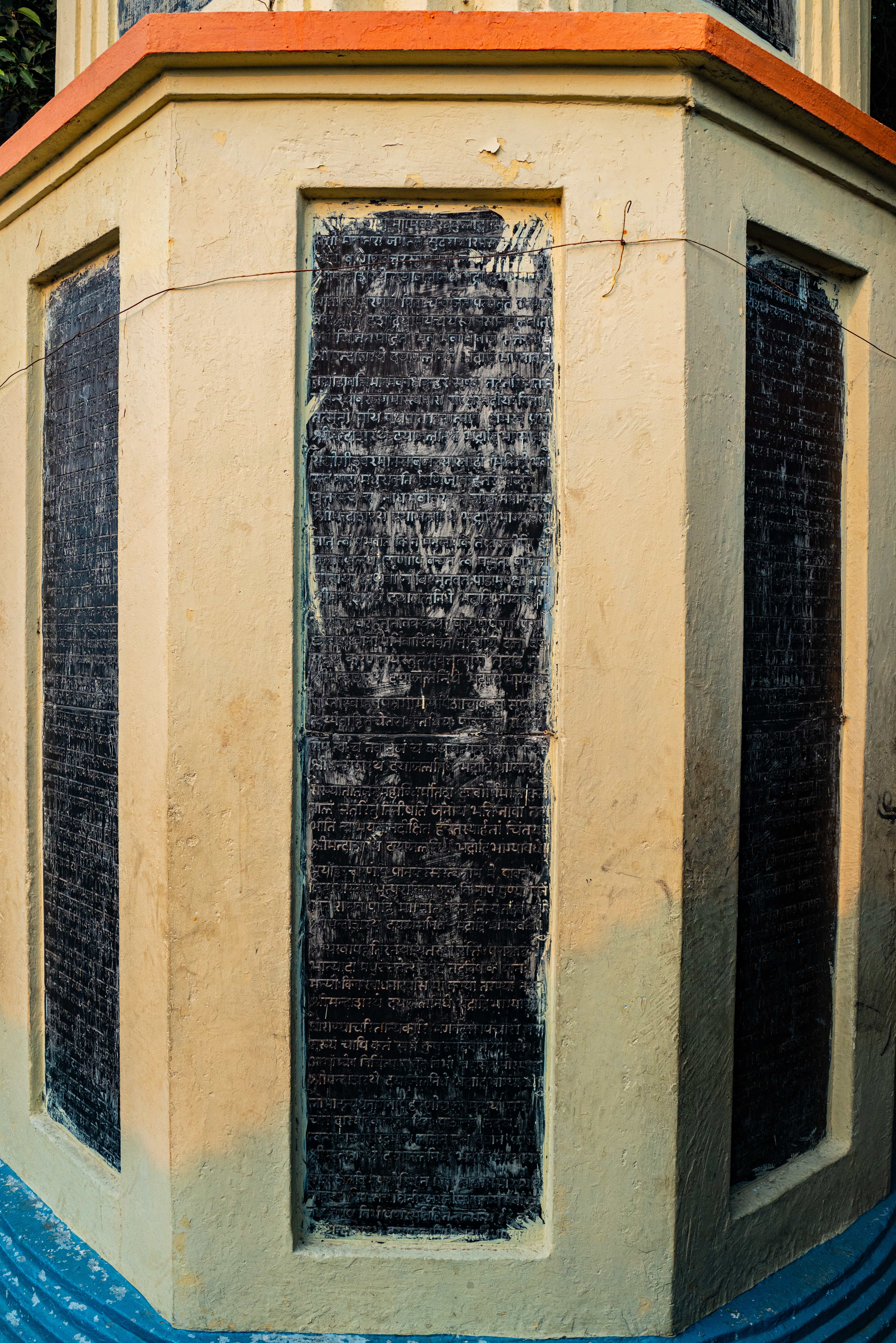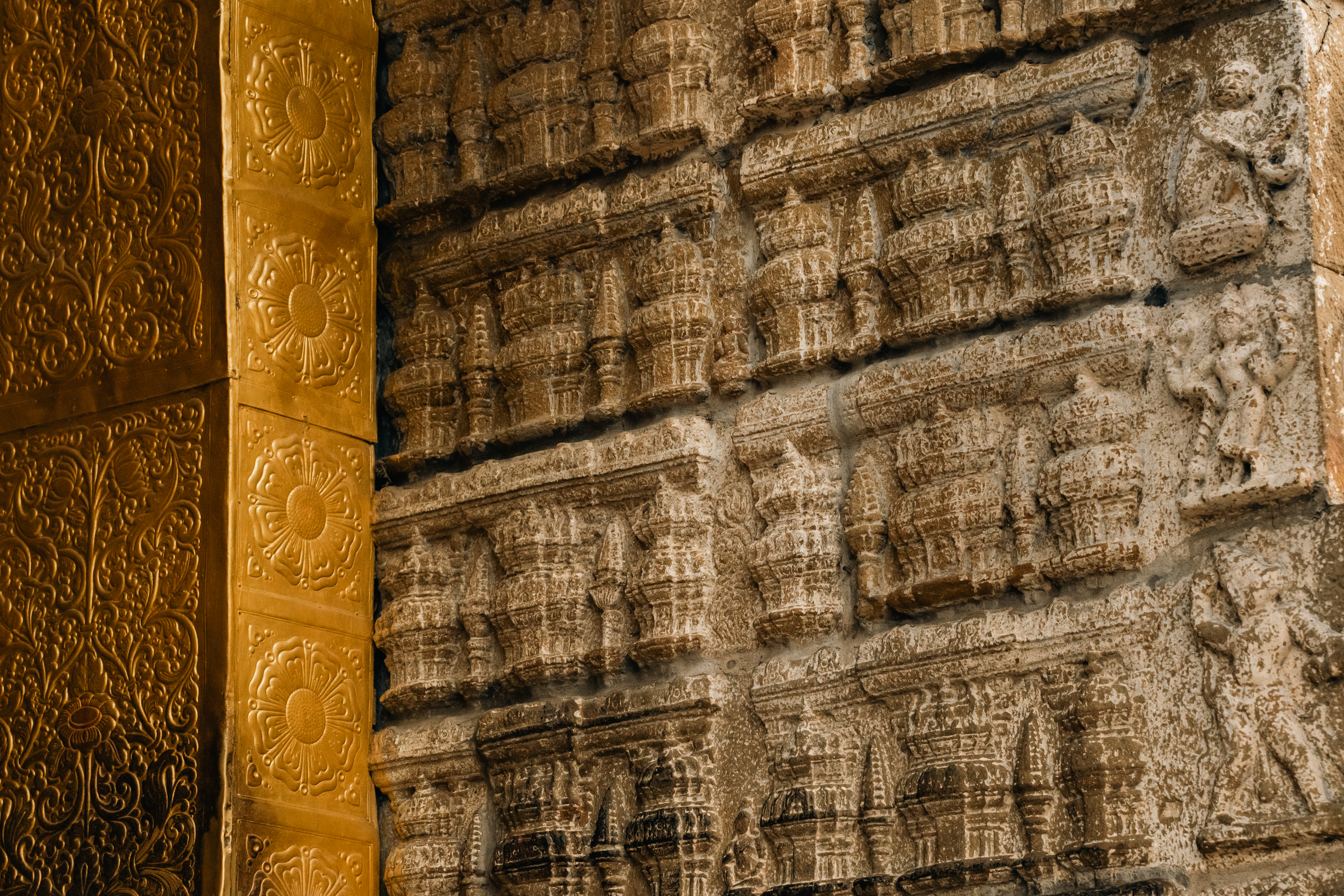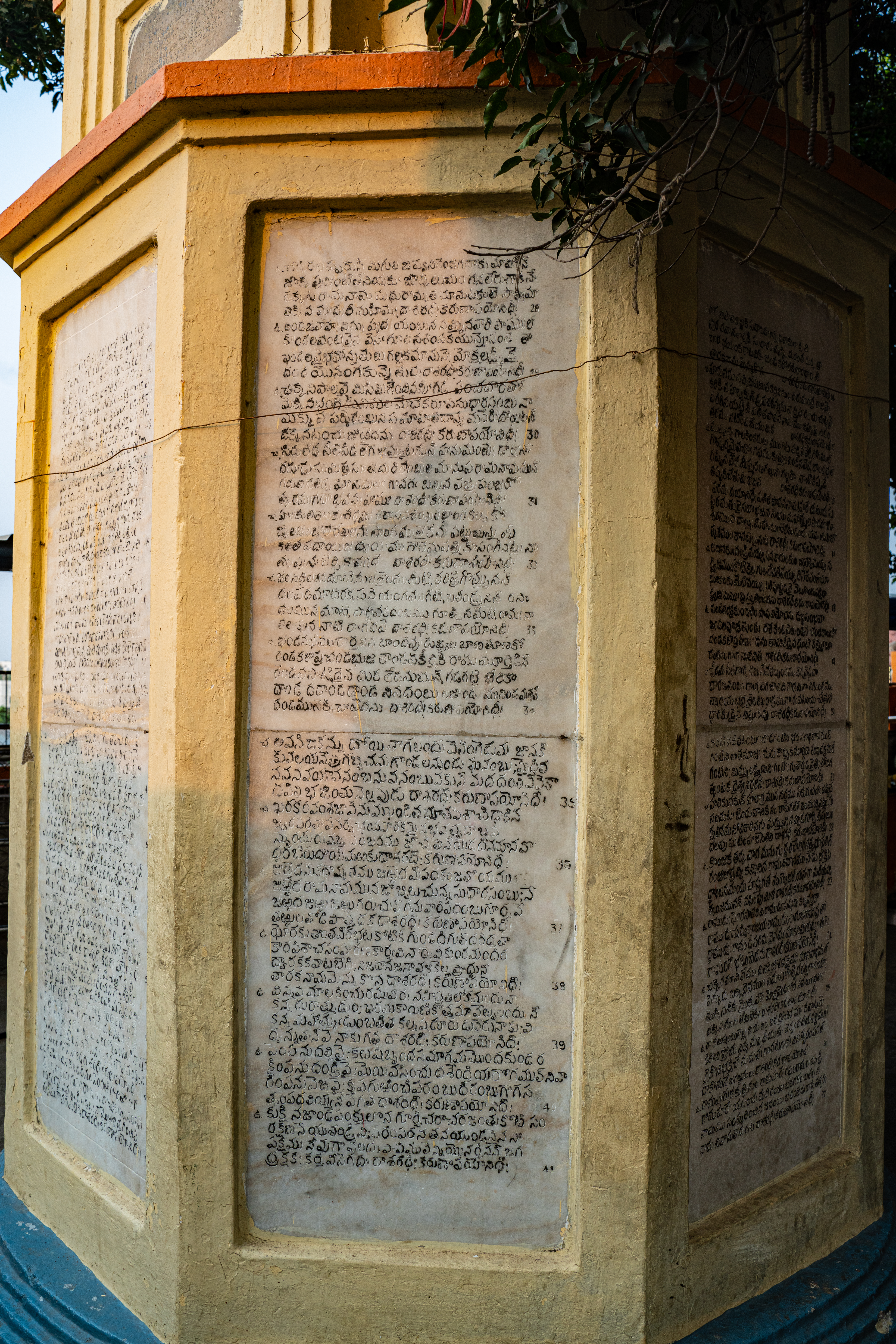Architecture The Bhadrachalam Temple, a prominent shrine dedicated to Lord Rama, is renowned for its distinctive South Indian architectural style and sacred ambiance. Situated on the banks of the Godavari River, the temple is encircled by the serene hills of Bhadrachalam, adding to its spiritual allure. The temple's primary structure is a grand multi-storied complex, with the central shrine housing the main deities: Lord Rama, Sita, and Lakshmana. The temple's Vimana (tower) over the sanctum sanctorum, designed in the Dravidian style, is adorned with intricate carvings and sculptures depicting various deities and mythological scenes. The architecture showcases a blend of granite and sandstone, typical of South Indian temples, and is highlighted by its richly decorated pillars and arches. The temple's main entrance features an imposing Gopuram (gateway tower), which is a classic example of Dravidian architecture. This gateway is embellished with elaborate sculptures and motifs that narrate stories from the Ramayana. Surrounding the temple are spacious courtyards and a series of mandapams (pillared halls) used for various rituals and congregational prayers. The temple complex includes a well-maintained water tank, used for ritual purification, and a series of smaller shrines dedicated to other deities. The intricacy of the temple's carvings and its imposing structure reflect the artistic and architectural prowess of the 17th century when it was reconstructed by Bhakta Ramadas. The sanctum sanctorum, where the primary deities reside, is renowned for its simplicity and sanctity. The main deity, Rama, is depicted with a serene expression, while Sita and Lakshmana are portrayed in a protective and devoted stance beside him. History The history of Bhadrachalam Temple dates back to the Ramayana era. According to legend, this area was part of Dandakaranya, where Lord Rama, along with his consort Sita and brother Lakshmana, spent part of their exile. It is believed that this is the place where Sita was abducted by Ravana, making it a significant location in the Ramayana. In the 17th century, the temple was constructed by Kancharla Gopanna, popularly known as Bhakta Ramadas. He was an passionate devotee of Lord Rama, it is said that he used the revenue collections of the region to fund the construction of the temple without the permission of the Nizam Nawab, which led to his imprisonment. Lore The lore surrounding Bhadrachalam Temple is rich with devotion and miraculous events. One such story involves Bhadra, a devotee of Lord Rama. In the sacred Dandakaranya region, Bhadra undertook severe penance on the banks of the Godavari River to seek the grace of Lord Rama. The exalted sage desired Rama to sit upon his head as a mark of honor. However, Rama, who was then searching for his consort Sita, promised Bhadra that his wish would be fulfilled upon his return (after rescuing Sita and defeating the demon Ravana). As Rama failed to fulfill this promise during his era, he later manifested as Vaikuntha Rama. He therefore fulfilled his devotee's wish, accompanied by Sita and Lakshmana, and signaled his arrival by blowing the Shanku (conch). The hill where the deities were positioned came to be known as Bhadrachalam, marking the fulfillment of Bhadra's long-awaited desire. The second story is about Pokala Dhammakka, a devotee of Lord Rama. The idols of Vaikuntha Rama, Lakshmana, and Sita were discovered by Pokala Dhammakka, a devoted woman from Bhadrireddypalem, in the 17th century. One night, she dreamt of Rama, who instructed her to find His hidden idols on Bhadragiri, perform worship, and seek salvation. The next morning, Dhammakka began her search and discovered the idols buried in an anthill. She poured hundreds of pots of Godavari water over the mound until the hidden deities emerged. Dhammakka then began daily worship, offering naivedyam made from fruits fallen from a nearby palmyra tree. She constructed a thatched hut for the deities with the help of local villagers. Rama had foretold that a devotee would later build a temple at this site, and that devotee turned out to be Bhakta Ramadas.
Bhakta Ramadas's story is another significant part of the temple's lore. Kancharla Gopanna, also known as Bhakta Ramadas, was a devout follower of Lord Rama, born in 1620 AD in Nelakondapalli, Khammamett Taluk. He served as Palvoncha Paragana's tahsildar. He was the nephew of Akkanna, who served as administrative head in Nawab Abul Hussan Shah's court. During his tenure, Gopanna, driven by his devotion, visited Bhadrachalam and discovered the deities. He encouraged villagers to fund the construction of a temple, but when contributions fell short, he used Rs 6 lakhs from land revenues to complete the temple without permission. Facing difficulties in installing the Sudarshana Chakra, Gopanna had a divine vision directing him to find the Chakra in the Godavari River. He succeeded and completed the temple. However, his actions led to his dismissal, imprisonment, and torture for 12 years. Gopanna conveyed his pain through his devotional hymns, which gained recognition in his literary works. One night, Nawab Tanishah experienced a vivid dream in which two radiant young men, Ramoji and Lakshmoji, appeared in his royal chambers. Introducing themselves as servants of Lord Rama, they presented him with a sack of gold coins, explaining it was to repay the money Bhakta Ramadas (Gopanna) had used to build the Bhadrachalam Temple. Startled by the divine vision, Tanishah awoke with a profound sense of awe. Convinced of Gopanna’s devotion, he ordered his release and vowed to support the temple. This miraculous event established a tradition of royal support, continued to this day through offerings made by the state during the Sri Rama Navami festival. This cherished legend of divine intervention stands as a testament to the power of true devotion at Bhadrachalam Temple.
|
To be updaed





